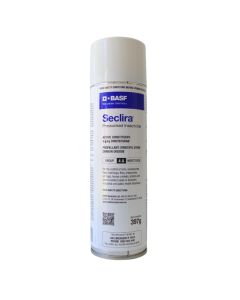Pill Bug/Slater
- Article
- Pill Bug/Slater
Pill Bug/Slater
Scientific Name: Armadillidium vulgare
How to identify a Pill Bug/Slater
Although there are a number of difference species which vary in colour and size, they all have a similar appearance – a small armoured bug (not an insect), grey / brown in colour with 7 body segments and 7 pairs of legs.
Young slaters look very similar to adult slaters on hatching from the eggs, except they only have 6 body segments / 6 pairs of legs.

Where are bill bug/slater commonly found?
They normally live in the garden and are a beneficial insects helping with the re-cycling of dead plant material. However they have been known to come inside homes and sheds when there are damp and dark areas and a food sources such as cardboard boxes.
Why are pill bug/slater considered a pest?
Pill Bugs/Slaters are considered a pest when they start chewing through cardboard boxes and paper materials in your home, garage or shed.
What is the biology and lifecycle of bill bug/slater?
The female pillbug carries the eggs in a pouch under her body. The number of eggs can be between two and 200, and they will hatch within two to seven weeks. They remain in the pouch up to 2 months after hatching. Development to adults occurs in about a year and they breed mainly in the spring. They may live up to 3 years. Up to three broods may be produced annually.
Management Tips for Pill Bug/Slater
Control:
-
Slaters are easily killed with a direct spray of insecticides either with an aerosol or ready to use pump pack.
-
Preventing the entry of slaters is best achieved by carrying out a perimeter spray with an insecticide (such as a ready to use pump pack), focusing on good coverage at ground level and around potential entry points.
Prevention:
-
As slaters feeding on mulch and decaying vegetation, keep garden beds and mulch away from the perimeter of the house
-
If you do have a garden bed next to the house, use a non-plant based mulch (such as pebbles) and minimise watering (as slaters like moisture)
-
Make sure all cracks and crevices around the edge of the house are sealed to prevent the entry of slaters and other unwanted pests.
PRODUCT SOLUTIONS
-
 Seclira Pressurised Insecticide 397g5g/kg Dinotefuran
Seclira Pressurised Insecticide 397g5g/kg DinotefuranSeclira Pressurised Insecticide is a fast-acting, non-repellent, ready-to-use product with System III compatibility for the control of a broad range of pests including ants, and cockroaches.
-
 Chaindrite Extra Strength Crawling Insect Spray1.4g/kg Imiprothin and 2g/kg Cypermethrin
Chaindrite Extra Strength Crawling Insect Spray1.4g/kg Imiprothin and 2g/kg CypermethrinChaindrite Crawling Insect Spray is a new low odour oil-based professional aerosol insecticide with a powerful flush and kill effect on cockroaches. Chaindrite is an easy to apply aerosol “without the splutter”.This product is an excellent knockdown and flushing agent and has long term residual activity.
-
 Ensnare Pro 50SC Insecticide 1L50g/L Indoxacarb
Ensnare Pro 50SC Insecticide 1L50g/L IndoxacarbEnsnarePRO is a non-repellent residual suspension concentrate spray. It can be used in conjunction with baits without reducing the performance of the bait. Ants, cockroaches and flies don’t know it’s there. The ‘non-repellent’ properties of this formulation does not interfer with insects natural behaviour...
-
 Battleaxe Pro Aerosol 420g20g/kg propoxur, 2g/kg tetramethrin, 10g/kg piperonyl butoxide
Battleaxe Pro Aerosol 420g20g/kg propoxur, 2g/kg tetramethrin, 10g/kg piperonyl butoxideBattleaxe PRO Professional Crack & Crevice is an aerosol formulation containing both long lasting and vapour-acting knockdown components.
-
 Seclira WSG Insecticide400g/kg Dinotefuran
Seclira WSG Insecticide400g/kg DinotefuranSeclira® WSG insecticide is a non-staining, odourless, broad spectrum, general insect control product for indoor and outdoor use.
-
 Termidor SC Residual Termiticide100g/L Fipronil
Termidor SC Residual Termiticide100g/L FipronilTermidor SC Residual Termiticide and Insecticide provides superior levels of control across subterranean termites, ants, cockroaches, spiders, and flies.
-
 Fipforce HP Insecticide and Termiticide100g/L Fipronil
Fipforce HP Insecticide and Termiticide100g/L FipronilFipforce HP is an insecticide and termiticide in a SC (suspension concentrate) formulation that provides effective, odourless. long-lasting, non-repellent control of termites.
-
 Starrdust PRO One-Shot Insecticidal Dust 400g20g/kg Permethrin, 5g/kg Triflumuron
Starrdust PRO One-Shot Insecticidal Dust 400g20g/kg Permethrin, 5g/kg TriflumuronThe Starrdust PRO One-Shot Insecticidal Dust 400g is an industrial-strength dust designed for use with the Starrdust PRO Duckbill Duster. It is a ready-to-use broad-spectrum insecticide with a unique formulation. It controls a wide range of insect pests including cockroaches, silverfish, spiders, ants, fleas, carpet beetles, bed bugs, European wasps, feral honey bees, bird mites, subterranean termites, hide beetles, millipedes, woodlice and clothes moths.
-
 Starrdust PRO One-Shot Insecticidal Dust 19 x 400g + Duckbill20g/kg Permethrin, 5g/kg Triflumuron
Starrdust PRO One-Shot Insecticidal Dust 19 x 400g + Duckbill20g/kg Permethrin, 5g/kg TriflumuronA convenient kit of 19 x Starrdust PRO One-Shot Insecticidal Dust 400g Pods and a bonus Duckbill Duster. StarrDust PRO is an industrial-strength dust designed for use with the Starrdust PRO Duckbill Duster. It is a ready-to-use broad-spectrum insecticide with a unique formulation. It controls a wide range of insect pests including cockroaches, silverfish, spiders, ants, fleas, carpet beetles, bed bugs, European wasps, feral honey bees, bird mites, subterranean termites, hide beetles, millipedes, woodlice and clothes moths.
JOIN OUR NEWSLETTER NOW!
Be the first to hear about the latest specials, products, tips and ideas.

